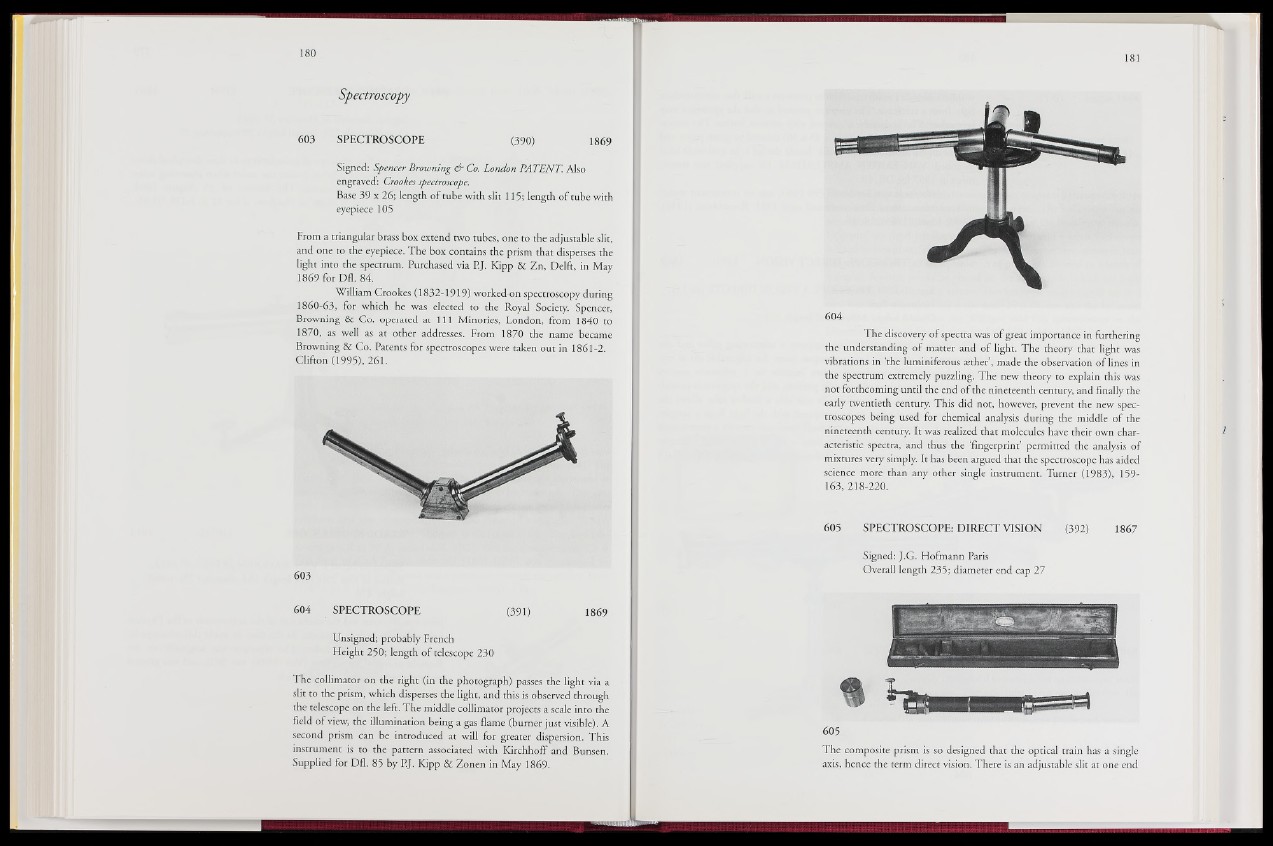
Spectroscopy
603 SPECTROSCOPE (390) 1869
Signed: Spencer Browning & Co. London PATENT. Also
engraved: Crookes spectroscope.
Base 39 x 26; length of tube with slit 115; length of tube with
eyepiece 105
From a triangular brass box extend two tubes, one to the adjustable slit,
and one to the eyepiece. The box contains the prism that disperses the
light into the spectrum. Purchased via P.J. Kipp 8c Zn, Delft, in May
1869 for Dfl. 84.
William Crookes (1832-1919) worked on spectroscopy during
1860-63, for which he was elected to the Royal Society. Spencer,
Browning 8c Co. operated at 111 Minories, London, from 1840 to
1870, as well as at other addresses. From 1870 the name became
Browning 8c Co. Patents for spectroscopes were taken out in 1861-2.
Clifton (1995), 261.
604 SPECTROSCOPE (391) - 1869
Unsigned; probably French
Height 250; length of telescope 230
The collimator on the right (in the photograph) passes the light via a
slit to the prism, which disperses the light, and this is observed through
the telescope on the left. The middle collimator projects a scale into the
field of view, the illumination being a gas flame (burner just visible). A
second prism can be introduced at will for greater dispersion. This
instrument is to the pattern associated with Kirchhoff and Bunsen.
Supplied for Dfl. 85 by P.J. Kipp 8c Zonen in May 1869.
604
The discovery of spectra was of great importance in furthering
the understanding of matter and of light. The theory that light was
vibrations in ‘the luminiferous æther’, made the observation of lines in
the spectrum extremely puzzling.Sghe new theory to explain this was
not forthcoming until the end of the nineteenth century, and finally the
early twentieth century. This did not, however, prevent the new spectroscopes
being used for chemical analysis during the middle of the
nineteenth century. It was realized that molecules have their own characteristic
spectra, and thus the ‘fingerprint’ permitted the analysis of
mixtures very simply. It has been argued that the spectroscope has aided
science more than any other single instrument. Turner (1983gil59-
163, 218-220.
605 SPECTROSCOPE: DIRECT VISION (3921, , 1867
Signed: J.G. Hofmann Paris
Overall length 235; diameter end cap 27
605
The composite prism is so designed that the optical train has a single
axis, hence the term direct vision. There is an adjustable slit at one end